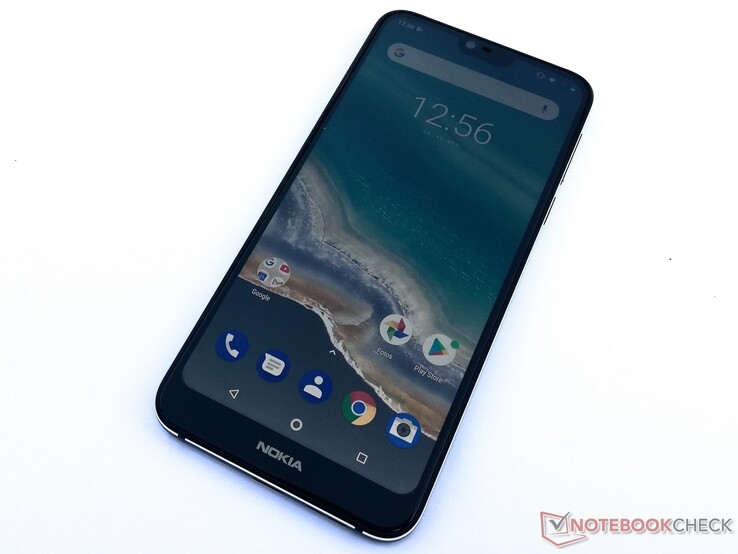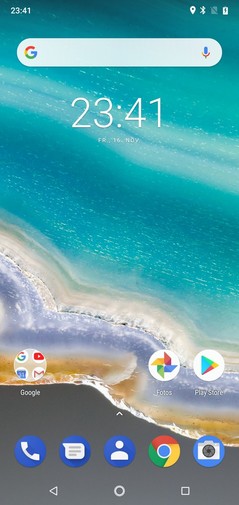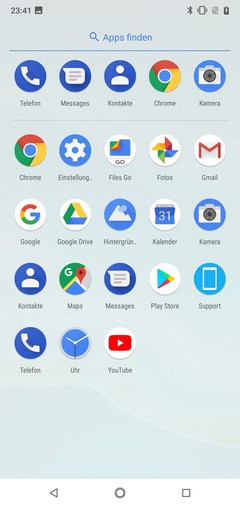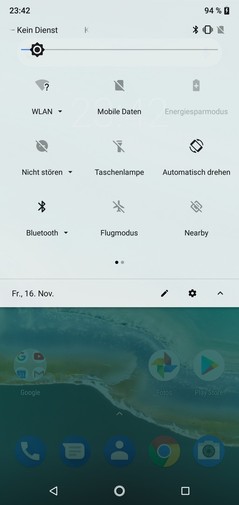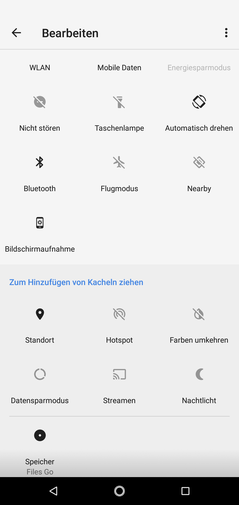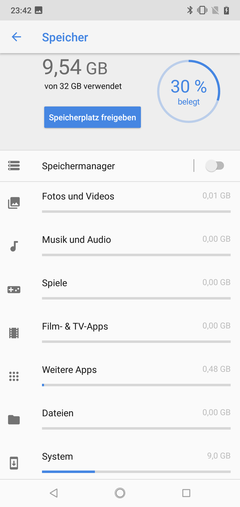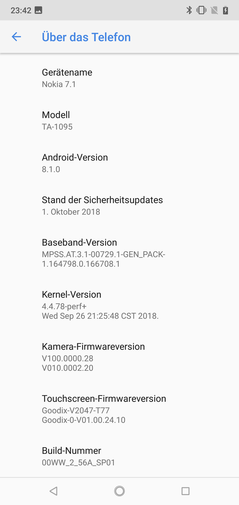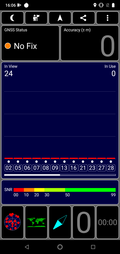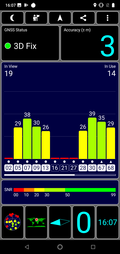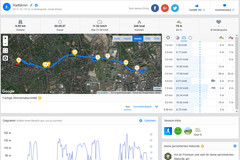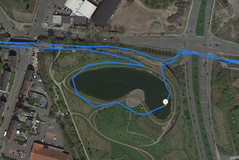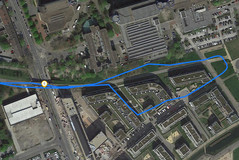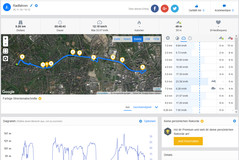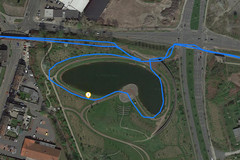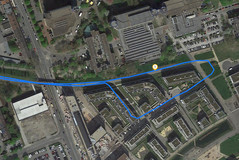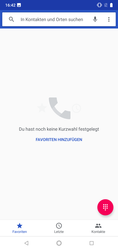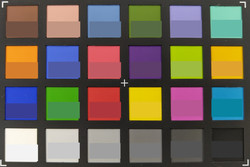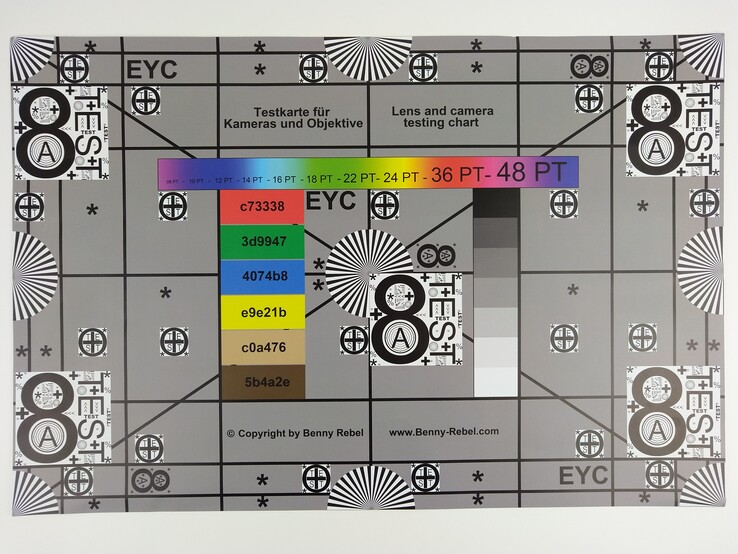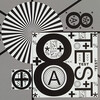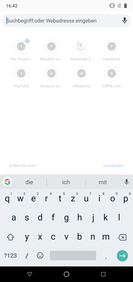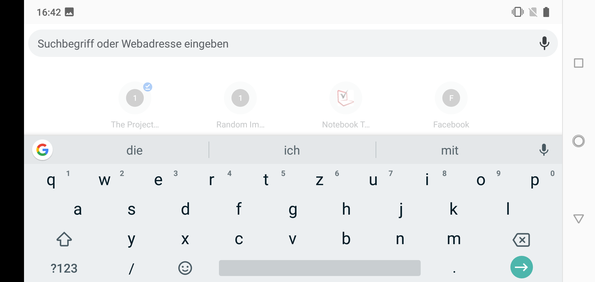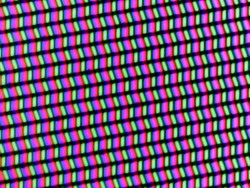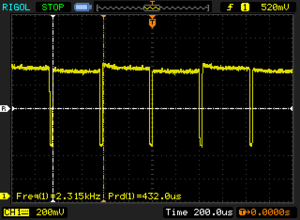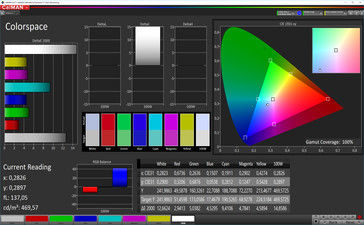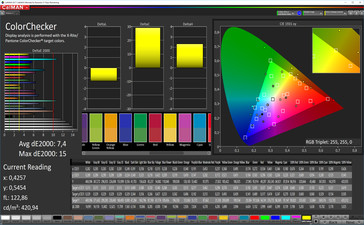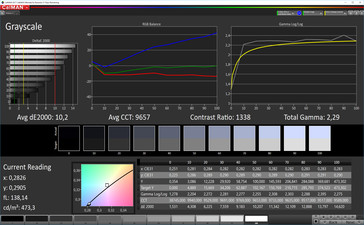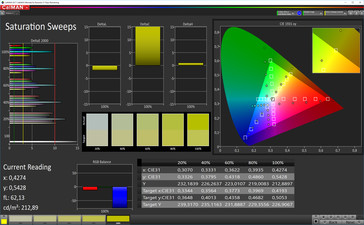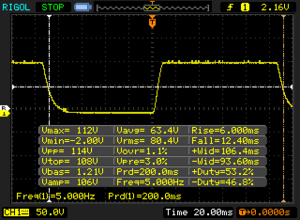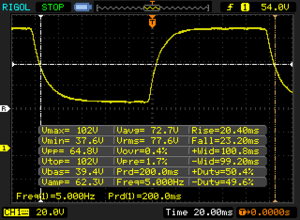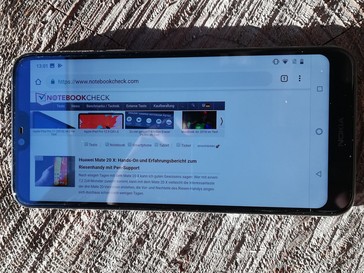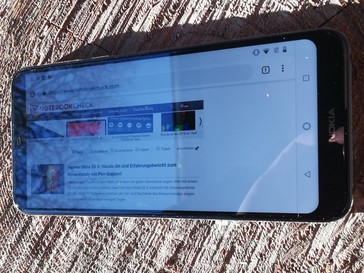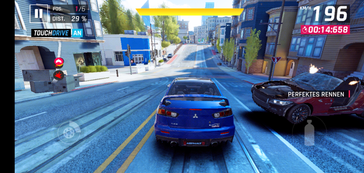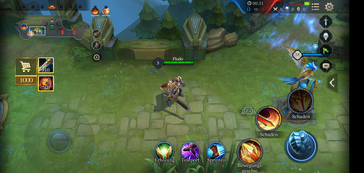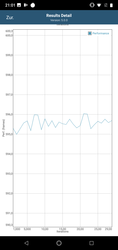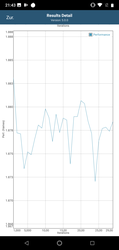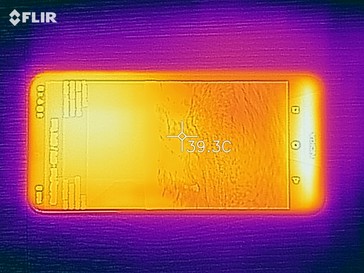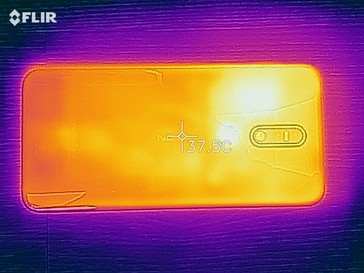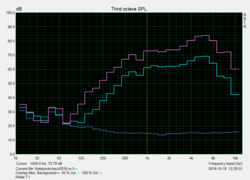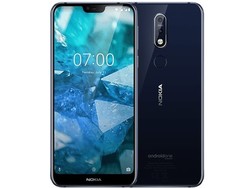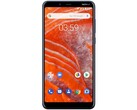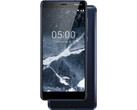Nokia 7.1 Smartphone Review
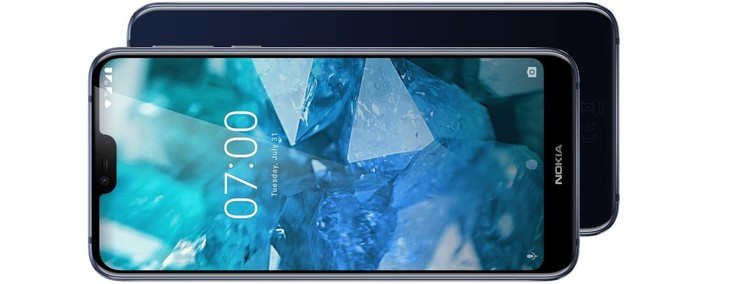
We have already seen the clean and pure flavor of Android, the so-called One Edition or Android One for short, on the Nokia 3.1 and Nokia 5.1, and thus it came as no surprise to see the Nokia 7.1 running the same operating system. With Android One users get a system that is kept up to date and provided with regular security updates by Google itself. In addition, these systems lack third-party bloatware that users might never want to use, and they can thus decide for themselves what apps to install and which ones to ignore.
HMD’s Nokia 7.1 comes with a Qualcomm Snapdragon 636 and a Adreno 509 GPU with access to 3 GB of RAM and 32 GB of eMMC storage. Not great, but sufficient for most apps and even a bit of headroom for more demanding applications.
Mid-range smartphones are aplenty, and the Nokia 7.1 is up against a wide variety of rivals. For this review, we have selected Android devices with a similar price-performance ratio, such as the Nokia 7 Plus, the Samsung Galaxy A7 2018, the Sony Xperia XA2 Plus, the Asus Zenfone 5 (2018) ZE620KL, and the Sharp D10.
Case
Encased in the Nokia 7.1’s aluminum frame are a front and back made of glass. More precisely, the front is reinforced with Gorilla Glass 3 while the rear is not. The nicely silhouetted beveled edges not only look very classy but also make the device feel very nice to the touch. Build quality is top notch and in line with the smartphone’s elegant design. The two colors options include Blue and Steel.
Its footprint is similar to a regular 6-inch smartphone, albeit with a much shorter long side. Accordingly, it feels like a compact smartphone with maximum screen real estate. At just 160 g (~5.6 oz), its weight puts it among the lightest devices in our test group.
Connectivity
Equipped with a Snapdragon 636 mid-range SoC, an Adreno 509 GPU, 3 GB of RAM and 32 GB of eMMC storage the Nokia 7.1 is sufficiently equipped for most everyday apps and games. However, many competitors in the same price range already offer 4 GB of RAM and 64 GB of storage space for which HMD charges a premium.
In addition to a plethora of sensors, such as the fingerprint reader on the back, the Nokia smartphone also comes with NFC, DualSIM capabilities, and a microSD card reader with support for microSD cards of up to 400 GB. However, you are going to lose the secondary nanoSIM slot by installing a microSD card. If two LTE-capable SIM cards are present both can be used for mobile data connections, and the primary SIM can be chosen in the settings menu.
A single USB Type-C port at the bottom is used for wired data transfers. Unfortunately, it is only connected via USB 2.0 but does support USB-OTG in return. The 3.5-mm headphone jack supports external speakers as well as headsets.
Software
For the Nokia 7.1, HMD has chosen the Android One flavor or Android Oreo with security patches as of October 1st, 2018. It is a pure and clean Android system free of third-party bloatware that is going to be kept up to date by Google itself. HMD is marketing the Nokia 7.1 accordingly - the users get to decide what apps they want to have installed on their smartphones.
Communication and GPS
The Nokia 7.1 supports mobile communication in 2G, 3G, and LTE networks. Thanks to LTE Cat. 6 it supports download and upload speeds of 300 and 50 Mbps, respectively. By and large, the bands and frequencies supported by the device are on a par with its competitors, and should suffice for the European market. In the US, it should work just fine on T-Mobile’s and AT&T’s networks. It can take two nanoSIM cards or one nanoSIM and one microSD card. Since the SoC supports even faster LTE speeds on paper the fact that the Nokia 7.1 is limited to LTE Cat. 6 means that its theoretical LTE performance is cut in half.
Other supported wireless communication standards include NFC, Bluetooth 5.0, and 802.11 a/b/g/n/ac Wi-Fi. Unfortunately, in our Wi-Fi test it only managed average transfer speeds of 334 and 232 Mbps receiving and transmitting data. Among its competitors, it can be found somewhere in the middle of the Wi-Fi benchmark chart.
| Networking | |
| iperf3 transmit AX12 | |
| Sony Xperia XA2 Plus | |
| Samsung Galaxy A7 2018 | |
| Asus Zenfone 5 ZE620KL | |
| Nokia 7.1 | |
| Sharp D10 | |
| iperf3 receive AX12 | |
| Asus Zenfone 5 ZE620KL | |
| Sharp D10 | |
| Nokia 7.1 | |
| Sony Xperia XA2 Plus | |
| Samsung Galaxy A7 2018 | |
We use the app “GPS Test” to evaluate a smartphone’s GPS capabilities. Outdoors, GPS accuracy was fairly decent at 3 m (~10 ft). Indoors, we were unable to obtain GPS lock due to lack of satellite connection. Supported location services include GPS and GLONASS, and we would have wished for Galileo support given the smartphone’s European heritage.
We also take each and every device out on a short biking trip around the block, and compare it to a professional Garmin Edge 500 satnav. In this test, we found the Nokia 7.1 to be fairly inaccurate as it located us next to our actual track. Sudden changes of direction are also recorded improperly while curves and bends were recorded perfectly fine.
Telephony and Call Quality
HMD has opted for Nokia’s default telephony app with access to a dial pad, the call log, and contacts. Call quality was immaculate and maximum volume was high enough even for noisy environments. Ambient noise is filtered to a certain degree, and the Nokia smartphone is very well-suited for telephony in most situations.
The included headset worked great for making phone calls, albeit voices were slightly muffled.
Cameras
The dual-camera at the back features a 12 MP sensor with an f1.8 Zeiss lens and a 5 MP sensor with an f 2.4 Zeiss lens. The front-facing camera features a single 8 MP sensor with an f/2.0 lens and turned out to take decent photos even under less than ideal lighting conditions. It loses a bit of detail overall, which can be best seen in finely granulated patterns, but in return manages to retain its ability to delimit areas with diverging color patterns. The camera menu includes options for various AI gimmicks and beautification features as well as picture-in-picture and an auto-timer. A professional mode allows for manual adjustment of ISO, white balance, shutter speed, and exposure.
The main camera’s panorama feature turned out to be mediocre at best, with colors that were slightly too dark and edges that seemed rather blurry when zoomed in. Overall, we would consider illumination to be pretty imbalanced, which was particularly detrimental to photos with a high dynamic range. Close-up colors were much more defined and differences in brightness had a lesser impact on image quality. Fine patterns and edges were sharp and the overall image quality was very decent. In poor lighting conditions the photos remained recognizable albeit visibly blurry and underexposed. In addition to the same options as for the front-facing shooter, the rear-facing camera menu also included a bokeh mode that can be used to further highlight the foreground by blurring the background.
Video quality was consistent with the photo quality by and large. However, poor lighting conditions resulted in a much higher level of picture graininess, and there was no option to set the video resolution. Instead, the camera menu included AI stickers that could be added to the video as well as an auto-timer. It also came with support for YouTube and Facebook live streaming, time lapse, and slow motion.
We test every camera under normalized condition with the ColorChecker passport to determine the color accuracy. In the case of the Nokia 7.1 colors were too bright and yellows were more accurate than the rest of the color spectrum. Dark grays turned out to be too bright while blacks turned out to be too dark.
Our test chart turned out overexposed and thus too bright under these normalized conditions. While colors were too bright the camera managed to retain the patterns and fine details. Both lower corners were visibly pale.
Accessories and Warranty
Included in the Nokia 7.1’s box are a modular USB charger, a USB Type-C cable, a stereo headset, and a SIM tool. Additional accessories specifically tailored to the Nokia 7.1 are not available.
While Europeans get a full 2 years of warranty US customers are once again deprived of that second year and limited to just 12 months. Please see our Guarantees, Return policies and Warranties FAQ for country-specific information.
Input Devices and Handling
HMD has opted for the default Google GBoard keyboard as standard keyboard for their Nokia 7.1 smartphone. The well-known keyboard application is well-suited for longer texts. The touchscreen was very responsive and sensitive. Unfortunately, it suffered from too much overall drag and made drag & drop operations more difficult than expected. The display was also very susceptible to fingerprints. The orientation sensor was a bit laggy, and rotating the screen contents took a short yet noticeable moment.
A fingerprint reader is located at the back of the device. It worked very reliably and unlocked the smartphone almost instantaneously.
Display
The Nokia 7.1’s 5.84-inch IPS display runs at a native resolution of 2280x1080. At 550 nits, the display was the darkest of all devices in our test group. Brightness distribution was measured at 91% and on a par with its competitors.
At brightness levels of 21% or below we found PWM flickering at a high frequency of 2,315 Hz. This frequency should be high enough to avoid eye strain and headaches even in more sensitive users.
| |||||||||||||||||||||||||
Brightness Distribution: 91 %
Center on Battery: 577 cd/m²
Contrast: 1603:1 (Black: 0.36 cd/m²)
ΔE ColorChecker Calman: 7.4 | ∀{0.5-29.43 Ø4.78}
ΔE Greyscale Calman: 10.2 | ∀{0.09-98 Ø5}
100% sRGB (Calman 2D)
Gamma: 2.29
CCT: 9657 K
| Nokia 7.1 IPS, 2280x1080, 5.8" | Asus Zenfone 5 ZE620KL IPS, 2246x1080, 6.2" | Sony Xperia XA2 Plus IPS, 2160x1080, 6" | Samsung Galaxy A7 2018 Super AMOLED, 2220x1080, 6" | Sharp D10 IPS, 2160x1080, 5.9" | |
|---|---|---|---|---|---|
| Screen | 10% | 30% | 41% | 11% | |
| Brightness middle (cd/m²) | 577 | 595 3% | 597 3% | 570 -1% | 745 29% |
| Brightness (cd/m²) | 550 | 561 2% | 592 8% | 565 3% | 723 31% |
| Brightness Distribution (%) | 91 | 87 -4% | 92 1% | 93 2% | 89 -2% |
| Black Level * (cd/m²) | 0.36 | 0.54 -50% | 0.32 11% | 0.6 -67% | |
| Contrast (:1) | 1603 | 1102 -31% | 1866 16% | 1242 -23% | |
| Colorchecker dE 2000 * | 7.4 | 4.2 43% | 2.4 68% | 1.5 80% | 4.52 39% |
| Colorchecker dE 2000 max. * | 15 | 6 60% | 5.3 65% | 3.6 76% | 9.14 39% |
| Greyscale dE 2000 * | 10.2 | 4.7 54% | 3.4 67% | 1.2 88% | 5.8 43% |
| Gamma | 2.29 96% | 2.12 104% | 2.2 100% | 2.07 106% | 2.262 97% |
| CCT | 9657 67% | 7577 86% | 7172 91% | 6504 100% | 7660 85% |
* ... smaller is better
Screen Flickering / PWM (Pulse-Width Modulation)
| Screen flickering / PWM detected | 2315 Hz | ≤ 21 % brightness setting | |
The display backlight flickers at 2315 Hz (worst case, e.g., utilizing PWM) Flickering detected at a brightness setting of 21 % and below. There should be no flickering or PWM above this brightness setting. The frequency of 2315 Hz is quite high, so most users sensitive to PWM should not notice any flickering. In comparison: 53 % of all tested devices do not use PWM to dim the display. If PWM was detected, an average of 8118 (minimum: 5 - maximum: 343500) Hz was measured. | |||
When inspected in our lab, the display showed a decent contrast ratio of 1,603:1 at a slightly elevated black level of 0.36 nits. Overall, the Nokia 7.1 turned out to be among the top devices in our test group.
By using CalMAN for a more detailed color analysis, we discovered a very pronounced blue tint. Unfortunately, the operating system does not come with color profile presets nor does it allow for a manual adjustment of color balance or color temperature.
Display Response Times
| ↔ Response Time Black to White | ||
|---|---|---|
| 18.4 ms ... rise ↗ and fall ↘ combined | ↗ 6 ms rise | |
| ↘ 12.4 ms fall | ||
| The screen shows good response rates in our tests, but may be too slow for competitive gamers. In comparison, all tested devices range from 0.1 (minimum) to 240 (maximum) ms. » 40 % of all devices are better. This means that the measured response time is similar to the average of all tested devices (20.2 ms). | ||
| ↔ Response Time 50% Grey to 80% Grey | ||
| 43.6 ms ... rise ↗ and fall ↘ combined | ↗ 20.4 ms rise | |
| ↘ 23.2 ms fall | ||
| The screen shows slow response rates in our tests and will be unsatisfactory for gamers. In comparison, all tested devices range from 0.165 (minimum) to 636 (maximum) ms. » 72 % of all devices are better. This means that the measured response time is worse than the average of all tested devices (31.6 ms). | ||
Performance
The Nokia 7.1 is equipped with a mid-range Qualcomm Snapdragon 636 SoC and an Adreno 509 GPU combined with 3 GB of RAM and 32 GB of internal eMMC storage. Accordingly, it is outclassed by some of its competitors. That said, performance should be ample for everyday applications and casual gaming. While Europeans can opt for a better equipped SKU with 4 GB of RAM and 64 GB of storage, this higher-end device is the only SKU currently available in the US and Canada.
In our tests, the Nokia 7.1 did comparatively well and landed somewhere in the top half in most benchmarks. The 3D performance was even better, and every now and then the device outperformed the entire competition.
| PCMark for Android | |
| Work performance score (sort by value) | |
| Nokia 7.1 | |
| Asus Zenfone 5 ZE620KL | |
| Sony Xperia XA2 Plus | |
| Samsung Galaxy A7 2018 | |
| Sharp D10 | |
| Average Qualcomm Snapdragon 636 (6040 - 7618, n=11) | |
| Work 2.0 performance score (sort by value) | |
| Nokia 7.1 | |
| Asus Zenfone 5 ZE620KL | |
| Sony Xperia XA2 Plus | |
| Samsung Galaxy A7 2018 | |
| Average Qualcomm Snapdragon 636 (5611 - 6277, n=11) | |
| GFXBench 3.0 | |
| on screen Manhattan Onscreen OGL (sort by value) | |
| Nokia 7.1 | |
| Asus Zenfone 5 ZE620KL | |
| Sony Xperia XA2 Plus | |
| Sharp D10 | |
| Average Qualcomm Snapdragon 636 (13 - 18, n=12) | |
| Average of class Smartphone (18 - 166, n=158, last 2 years) | |
| 1920x1080 1080p Manhattan Offscreen (sort by value) | |
| Nokia 7.1 | |
| Asus Zenfone 5 ZE620KL | |
| Sony Xperia XA2 Plus | |
| Sharp D10 | |
| Average Qualcomm Snapdragon 636 (16 - 16, n=12) | |
| Average of class Smartphone (12 - 606, n=157, last 2 years) | |
| GFXBench 3.1 | |
| on screen Manhattan ES 3.1 Onscreen (sort by value) | |
| Nokia 7.1 | |
| Asus Zenfone 5 ZE620KL | |
| Sony Xperia XA2 Plus | |
| Sharp D10 | |
| Average Qualcomm Snapdragon 636 (5.7 - 12, n=12) | |
| Average of class Smartphone (11 - 166, n=158, last 2 years) | |
| 1920x1080 Manhattan ES 3.1 Offscreen (sort by value) | |
| Nokia 7.1 | |
| Asus Zenfone 5 ZE620KL | |
| Sony Xperia XA2 Plus | |
| Sharp D10 | |
| Average Qualcomm Snapdragon 636 (6.3 - 10, n=12) | |
| Average of class Smartphone (8.4 - 413, n=157, last 2 years) | |
| AnTuTu v7 - Total Score (sort by value) | |
| Nokia 7.1 | |
| Asus Zenfone 5 ZE620KL | |
| Sony Xperia XA2 Plus | |
| Samsung Galaxy A7 2018 | |
| Sharp D10 | |
| Average Qualcomm Snapdragon 636 (115565 - 138661, n=11) | |
| AnTuTu v6 - Total Score (sort by value) | |
| Nokia 7.1 | |
| Asus Zenfone 5 ZE620KL | |
| Sony Xperia XA2 Plus | |
| Samsung Galaxy A7 2018 | |
| Sharp D10 | |
| Average Qualcomm Snapdragon 636 (92015 - 125213, n=10) | |
In our browser benchmarks the device once again performed well enough to secure its place in the top half. The web browser launched quickly and loaded web sites without noticeable lag. Media contents loaded within an acceptably short period of time and ran smoothly once loaded.
| JetStream 1.1 - Total Score | |
| Asus Zenfone 5 ZE620KL (Chrome 67) | |
| Samsung Galaxy A7 2018 (Chrome 70) | |
| Average Qualcomm Snapdragon 636 (44.2 - 51.5, n=11) | |
| Nokia 7.1 (Chrome 70) | |
| Sharp D10 (Chrome 70) | |
| Sony Xperia XA2 Plus (Chrome 67) | |
| Octane V2 - Total Score | |
| Average of class Smartphone (2228 - 121337, n=200, last 2 years) | |
| Asus Zenfone 5 ZE620KL (Chrome 67) | |
| Samsung Galaxy A7 2018 (Chrome 70) | |
| Average Qualcomm Snapdragon 636 (8163 - 9746, n=12) | |
| Nokia 7.1 (Chrome 70) | |
| Sony Xperia XA2 Plus (Chrome 67) | |
| Sharp D10 (Chrome 70) | |
| Mozilla Kraken 1.1 - Total | |
| Sony Xperia XA2 Plus (Chrome 67) | |
| Sharp D10 (Chrome 70) | |
| Average Qualcomm Snapdragon 636 (4105 - 5066, n=12) | |
| Nokia 7.1 (Chrome 70) | |
| Samsung Galaxy A7 2018 (Chrome 70) | |
| Asus Zenfone 5 ZE620KL (Chrome 67) | |
| Average of class Smartphone (257 - 28190, n=155, last 2 years) | |
| WebXPRT 3 - Overall | |
| Average of class Smartphone (38 - 380, n=35, last 2 years) | |
| Samsung Galaxy A7 2018 (Chrome 70) | |
| Average Qualcomm Snapdragon 636 (46 - 61, n=9) | |
| Nokia 7.1 (Chrome 70) | |
| Sony Xperia XA2 Plus (Chrome 67) | |
| WebXPRT 2015 - Overall | |
| Samsung Galaxy A7 2018 (Chrome 70) | |
| Average Qualcomm Snapdragon 636 (147 - 184, n=8) | |
| Nokia 7.1 (Chrome 70) | |
| Sony Xperia XA2 Plus (Chrome 67) | |
* ... smaller is better
Out of the box around 22 GB of the smartphone’s internal 32 GB storage space were accessible. The storage chips based on eMMC technology offered average performance that was slightly slower than its competitors.
The microSD card reader supports microSD cards with up to 400 GB. Unfortunately, microSD cards cannot be formatted as internal storage and are thus unavailable for storing applications. Performance was average, yet decent when benchmarked with our Toshiba Exceria Pro M501 reference card. Keep in mind that the Nokia 7.1 does not support exFAT, and is thus limited to files of up to 4 GB in size.
Please also bear in mind that by installing a microSD card you will lose access to the secondary nanoSIM slot.
| Nokia 7.1 | Asus Zenfone 5 ZE620KL | Sony Xperia XA2 Plus | Samsung Galaxy A7 2018 | Sharp D10 | Average 32 GB eMMC Flash | Average of class Smartphone | |
|---|---|---|---|---|---|---|---|
| AndroBench 3-5 | 124% | 17% | 20% | 22% | 5% | 1353% | |
| Sequential Read 256KB (MB/s) | 250.9 | 286.6 14% | 281.1 12% | 295.8 18% | 280.7 12% | 242 ? -4% | 2223 ? 786% |
| Sequential Write 256KB (MB/s) | 126 | 201.8 60% | 146.2 16% | 104.9 -17% | 211.5 68% | 100.5 ? -20% | 1838 ? 1359% |
| Random Read 4KB (MB/s) | 44.9 | 71.2 59% | 77.4 72% | 84 87% | 47.2 5% | 43.1 ? -4% | 295 ? 557% |
| Random Write 4KB (MB/s) | 11.93 | 83.5 600% | 10.5 -12% | 15.45 30% | 16.79 41% | 22.3 ? 87% | 335 ? 2708% |
| Sequential Read 256KB SDCard (MB/s) | 83.5 ? | 85.8 ? 3% | 86 ? 3% | 78.2 ? -6% | 83.2 ? 0% | 71.8 ? -14% | |
| Sequential Write 256KB SDCard (MB/s) | 61.2 ? | 65.2 ? 7% | 67 ? 9% | 64.4 ? 5% | 63.6 ? 4% | 52.9 ? -14% |
Gaming
Graphics are handled by an Adreno 509 GPU, which performed sufficiently well to run games with average demands smoothly by and large. We were able to run both, "Arena of Valor" and "Asphalt 9: Legends" very well on high details. The touchscreen was very precise and responsive, and so was the orientation sensor. Unfortunately, the display’s aforementioned increased resistance and drag turned out to be a killjoy after a while as it led to untimely signs of fatigue in our fingers.
Emissions
Temperature
Surface temperatures remained inconspicuous and never exceeded 35 °C (~95 °F) when idle and 38 °C (~100 °F) under load. The smartphone felt warm to the touch, but never uncomfortably so.
GFXBench’s demanding sustained load benchmarks ES 2.0 and Manhattan 3.1 showed a consistent performance regardless of core temperatures. Thus, we do not expect any thermal throttling to occur during normal everyday use.
(+) The maximum temperature on the upper side is 38.2 °C / 101 F, compared to the average of 35.2 °C / 95 F, ranging from 21.9 to 247 °C for the class Smartphone.
(+) The bottom heats up to a maximum of 35.5 °C / 96 F, compared to the average of 34 °C / 93 F
(+) In idle usage, the average temperature for the upper side is 31.4 °C / 89 F, compared to the device average of 32.9 °C / 91 F.
Speakers
The Nokia 7.1’s speaker was fairly loud and geared noticeably towards high frequencies. Bass is massively under represented, and the result is a rather feebly sounding soundscape. However, the speaker is good enough for occasional media consumption. The included stereo headset did a much better job, but was too bass-heavy in return, which made it hard to understand voices clearly.
Headsets and external speakers can be connected via the 3.5-mm headphone jack. It was very tight and had no negative impact on sound quality.
Nokia 7.1 audio analysis
(+) | speakers can play relatively loud (89.9 dB)
Bass 100 - 315 Hz
(-) | nearly no bass - on average 28.1% lower than median
(±) | linearity of bass is average (10.5% delta to prev. frequency)
Mids 400 - 2000 Hz
(+) | balanced mids - only 3.3% away from median
(+) | mids are linear (5.4% delta to prev. frequency)
Highs 2 - 16 kHz
(±) | higher highs - on average 6.4% higher than median
(+) | highs are linear (5.6% delta to prev. frequency)
Overall 100 - 16.000 Hz
(±) | linearity of overall sound is average (19.3% difference to median)
Compared to same class
» 26% of all tested devices in this class were better, 9% similar, 65% worse
» The best had a delta of 11%, average was 35%, worst was 134%
Compared to all devices tested
» 46% of all tested devices were better, 8% similar, 47% worse
» The best had a delta of 4%, average was 24%, worst was 134%
Samsung Galaxy A7 2018 audio analysis
(+) | speakers can play relatively loud (85.5 dB)
Bass 100 - 315 Hz
(-) | nearly no bass - on average 27.5% lower than median
(±) | linearity of bass is average (10.4% delta to prev. frequency)
Mids 400 - 2000 Hz
(+) | balanced mids - only 3.6% away from median
(+) | mids are linear (4.8% delta to prev. frequency)
Highs 2 - 16 kHz
(±) | higher highs - on average 8.2% higher than median
(+) | highs are linear (3.3% delta to prev. frequency)
Overall 100 - 16.000 Hz
(±) | linearity of overall sound is average (22.3% difference to median)
Compared to same class
» 46% of all tested devices in this class were better, 7% similar, 47% worse
» The best had a delta of 11%, average was 35%, worst was 134%
Compared to all devices tested
» 64% of all tested devices were better, 6% similar, 30% worse
» The best had a delta of 4%, average was 24%, worst was 134%
Energy Management
Power Consumption
Overall, the Nokia 7.1 turned out to be a pretty efficient device. A minimum of just 1.01 W when idle and a maximum of 5.56 W under load were comparatively low. However, it was still slightly more power hungry than the average of its class.
The included 18-W charger is amply dimensioned to charge the phone at all times and regardless of load.
| Off / Standby | |
| Idle | |
| Load |
|
Key:
min: | |
| Nokia 7.1 3060 mAh | Asus Zenfone 5 ZE620KL 3300 mAh | Sony Xperia XA2 Plus 3580 mAh | Samsung Galaxy A7 2018 3300 mAh | Sharp D10 2900 mAh | Average Qualcomm Snapdragon 636 | Average of class Smartphone | |
|---|---|---|---|---|---|---|---|
| Power Consumption | -107% | 25% | 5% | 26% | -12% | -22% | |
| Idle Minimum * (Watt) | 1.01 | 1.75 -73% | 0.35 65% | 0.71 30% | 0.7 31% | 0.944 ? 7% | 0.848 ? 16% |
| Idle Average * (Watt) | 2.2 | 4.48 -104% | 1.81 18% | 1.36 38% | 1 55% | 2.22 ? -1% | 1.435 ? 35% |
| Idle Maximum * (Watt) | 2.25 | 4.5 -100% | 1.83 19% | 1.47 35% | 1.4 38% | 2.54 ? -13% | 1.621 ? 28% |
| Load Average * (Watt) | 3.76 | 7.92 -111% | 3.31 12% | 5.13 -36% | 3.7 2% | 4.51 ? -20% | 6.99 ? -86% |
| Load Maximum * (Watt) | 5.56 | 13.62 -145% | 4.97 11% | 7.89 -42% | 5.2 6% | 7.37 ? -33% | 11.3 ? -103% |
* ... smaller is better
Battery Life
In our Wi-Fi test, the Nokia 7.1 ran out of power after just 5:46 hours. Comparable devices, such as the Sharp D10, will outlast today’s review unit by at least two hours despite their even smaller batteries.
Charging the 3,060 mAh battery from near empty to full with the included charger took around two hours.
| Nokia 7.1 3060 mAh | Asus Zenfone 5 ZE620KL 3300 mAh | Sony Xperia XA2 Plus 3580 mAh | Samsung Galaxy A7 2018 3300 mAh | Sharp D10 2900 mAh | |
|---|---|---|---|---|---|
| Battery runtime | 43% | 208% | 66% | 84% | |
| Reader / Idle (h) | 16.4 | 78 376% | 24.5 49% | ||
| H.264 (h) | 8.5 | 14.9 75% | 13.9 64% | ||
| WiFi v1.3 (h) | 5.8 | 8.3 43% | 14 141% | 10.1 74% | 10.7 84% |
| Load (h) | 2.6 | 8.8 238% | 4.6 77% |
Pros
Cons
Verdict
After putting the Nokia 7.1 through its paces we feel confident to say that it is a solid mid-range smartphone that excels primarily through its design. Connectivity is not its strong suit, and many a competitor can be had with better connectivity for less money. However, it makes up for it by running the pure and clean Android One flavor of Oreo. Thus, the user remains in charge over the installed applications and security updates are provided for three years thanks to Google.
The Nokia 7.1 is a good-looking device offering solid performance. However, neither battery life nor connectivity are on a par with its competitors.
The system performance is sufficient for most everyday tasks, and it is even capable of running more demanding apps. At just 32 GB, the internal storage is somewhat limited, and microSD cards cannot be used as internal storage but media files only. In addition, battery life is pretty poor. The main camera turned out to be halfway decent, and a better equipped SKU with 4 GB of RAM and 64 GB of storage is available if so desired.
Nokia 7.1
- 11/26/2018 v6 (old)
Mike Wobker




